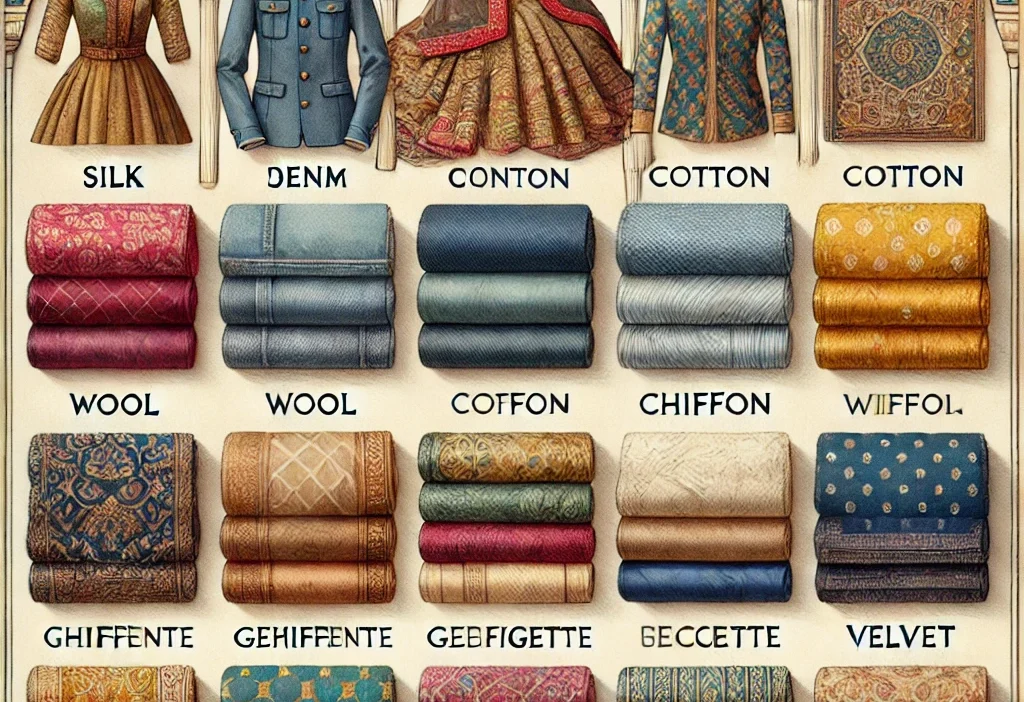The textile industry plays a vital role in shaping global fashion, and India, with its rich heritage, stands at the forefront of fabric production. From Rajasthani style dresses adorned with intricate embroidery to modern denim, textiles define our cultural and sartorial choices. Whether you’re a fashion enthusiast or a textile student, recognizing fabrics by touch is an essential skill. In this article, we’ll explore 10 different fabrics you can identify with your fingertips.
1. Silk – The Luxurious Touch
Silk is known for its soft, smooth texture with a natural sheen. Produced primarily in states like Karnataka and West Bengal, this fabric is a staple in Rajasthani style dress designs, such as luxurious sarees and lehengas. Its cool and flowing feel makes it easy to distinguish from other textiles.
2. Cotton – The Breathable Classic
As one of the most widely used fabrics, cotton is lightweight, breathable, and has a slightly rough yet soft touch. The textile industry in India has been producing cotton for centuries, with Gujarat and Maharashtra leading in production. Many traditional outfits, including Rajasthani kurtas and ghagras, are crafted from fine cotton.
3. Wool – Warm and Fluffy
Wool’s texture is warm and slightly coarse, making it ideal for winter wear. India produces high-quality wool in regions like Himachal Pradesh and Kashmir. You can instantly recognize it by its thickness and warmth-retaining properties.
4. Chiffon – Light and Airy
Chiffon is a sheer, lightweight fabric that feels soft and slightly grainy. It’s often used in Rajasthani style dresses like dupattas and sarees. The fabric’s draping quality and delicate texture make it unique.
5. Georgette – Rough Yet Flowing
Georgette is another lightweight fabric but has a slightly rough texture compared to chiffon. It is commonly used in ethnic and contemporary fashion, providing a structured yet fluid drape.
6. Velvet – Soft and Royal
Velvet is rich, smooth, and soft, with a plush feel. The fabric has been a favorite in Rajasthani style dresses for its royal appearance. It’s commonly used for lehengas, jackets, and upholstery due to its luxurious touch.
7. Denim – The Rugged Essential
Denim is a strong, sturdy fabric with a firm yet flexible texture. It’s mainly used in jeans and jackets and has a distinct feel that sets it apart from traditional Indian textiles.
8. Linen – Cool and Crisp
Linen is a breathable fabric that feels slightly stiff and crisp. It is highly absorbent and softens over time, making it a popular choice for summer wear in India.
9. Brocade – Textured and Ornate
Brocade is a heavy, textured fabric woven with intricate patterns, commonly used in festive and wedding attire. The textile industry in India has been producing brocade fabrics for centuries, particularly in Banaras.
10. Khadi – Handwoven Heritage
Khadi is a hand-spun fabric with a coarse yet comfortable feel. The first textile industry in India revolved around handloom production, and khadi remains a symbol of India’s rich weaving tradition.
Conclusion
From luxurious silks to rugged denim, each fabric has a distinct feel that helps in identification. Whether it’s for designing Rajasthani style dresses or understanding the evolution of the textile industry in India, knowing these fabrics can enhance your knowledge and appreciation of textiles.




